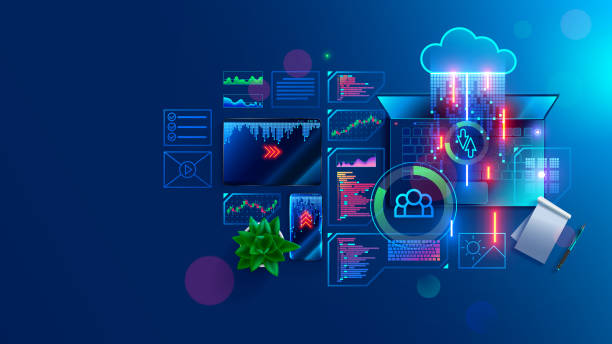5 Major Challenges Involved in Platform Modernisation

Business apps are the backbone of every company in this digital transformation era, driving critical business activities and assisting in customer engagement. These platforms are created from the ground up to serve certain functions and boost productivity.
They were, however, frequently created with monolithic architecture and outdated technologies that are hard and costly to support. The monolithic paradigm focuses on a single integrated app with the most features and functionalities. In a real-world environment, experiences must be tailored depending on individual devices, users, and use cases.
Application developers confront several issues as their applications grow in size and complexity, and they struggle to manage an increasingly complicated environment of apps, services, data, and APIs. The monolithic paradigm inhibits today’s applications’ agility, adaptability, and scalability. To remain agile, they require an application modernization strategy.
Today, modern systems that can expand fast to millions of users spread internationally, give a fantastic user experience, and manage millions of requests quickly with very low latency are in high demand.
What Does Platform Modernisation Mean?
Platform modernisation refers to the ongoing conversion of outdated software to a new app or platform, which includes more distinct languages, platforms, libraries, techniques, architecture, and infrastructure. Re-platforming, rehosting, recoding, rearchitecting, re-engineering, interoperability, and other modernisation alternatives are available.
Application executives want a comprehensive strategy for app modernization that includes retiring low-usage programs, replacing SaaS platforms, lifting and transferring to the cloud, reworking, optimizing using cloud PaaS or containers, and rebuilding with cloud-native designs.
With the development of the low-code approach, many businesses are also extending or rebuilding their current LOB apps with cloud-based low-code solutions.
Challenges Involved in Platform Modernisation
As we all know, application leaders must deal with a complicated application environment that includes several technologies, frameworks, and infrastructure, overlapping business processes, and dependencies from hard-coded connections.
Organizations must also deal with cultural shifts in IT attitude, updating IT and development capabilities, and the associated costs. Here are some significant obstacles that application executives confront when determining where and how to begin the platform modernisation process.
1. Legacy Applications And Dependencies
Legacy applications and their components, such as data, network settings, and security, are inextricably linked to the underlying infrastructure. Because of the close interconnectedness, updating platform components is difficult. Even minor modifications can be time-consuming and labor-intensive.
2. Siloed Application And Testing
Organizations may see apps replicated with various users or departments based on their needs over time. As a result, the same application is operating on extra infrastructure with various databases, tripling the maintenance work for IT professionals.
The fragmented application scenario complicates platform testing and makes it difficult for IT teams to optimize and integrate apps and infrastructure.
3. Lack Of Knowledge And Skills
There is a scarcity of developers that understand the legacy application technology stack and can generate complete functional and technical gap analyses for the required platform modernisation.
Most of the source code in legacy applications has been patched and developed over time without sufficient design documentation. As a result, the developers must manually review the codes. This is a massive endeavor that takes a great deal of information, skills, work, and time.
4. IT And Business Misalignment
Several firms have misaligned business groups and IT departments on application goals, resulting in many apps and data storage with overlapping or duplicate capabilities.
Platform modernisation is hampered by this misalignment in crucial areas like time-to-value, the total cost of ownership, and user experience. This results in greater expenses, inefficiencies, and a lack of business process integration.
5. Migration Issues And Business Impact
There are several problems when transferring and changing applications to newer platforms or architecture. You must guarantee that the migrated apps function properly in the newer environment without causing any business disruption.
Due to the high complexity and interdependence, there may be some cut-off during migration. You must guarantee that there is no subsequent impact on the entire business functioning and operations.
Best Practices For Platform Modernisation
Here are some best practices to assist a company in its platform modernisation journey.
- You must develop a convincing business case for platform modernisation by answering issues such as why you want to update an application today, the related advantages, the dangers, and what new business prospects it creates.
- Create success metrics to track and assess your progress. Having a risk assessment methodology for any migration or platform upgrade strategy (refactor, rehost, rearchitect, rebuild, or replace). All details and components of the experience should be documented for future growth and opportunities.
- Create a clear platform modernisation roadmap. The roadmap should cover all areas, such as reviewing the present IT infrastructure (number and kind of servers, network configuration, storage, and so on), the time and effort necessary to build the required infrastructure, and if the desired cloud environment supports it.
- Consider a strategy for isolating your applications from the infrastructure, including database network and security setups. This strategy allows you to operate your application component anywhere by utilizing various underlying infrastructure combinations.
- Consider cloud application migrations. Consider developing a virtualized or containerized application environment with open source and other tools and APIs that make this approach scalable. This allows you to manage your applications at the component level, and it allows you to run and evaluate the application effectively and efficiently in a virtual environment.
Wrapping It Up
Platform modernisation is a crucial aspect for driving digital transformation.
Looking for a partner that can help you modernize your platform? Look no further than Srijan. They work with you to define your business use cases and assess the current state of your platform and its challenges. Based on your unique needs, Srijan helps to develop a roadmap for your platform strategy that can help develop and deliver your software needs quickly.
--------------------------------
Guestposted.com Notice!
Audience discretion is needed, Read TOS.
Submit Guest Post / Read Latest / Category List
App & Rate-Us / Subscribe Daily Newsletter (FREE)



